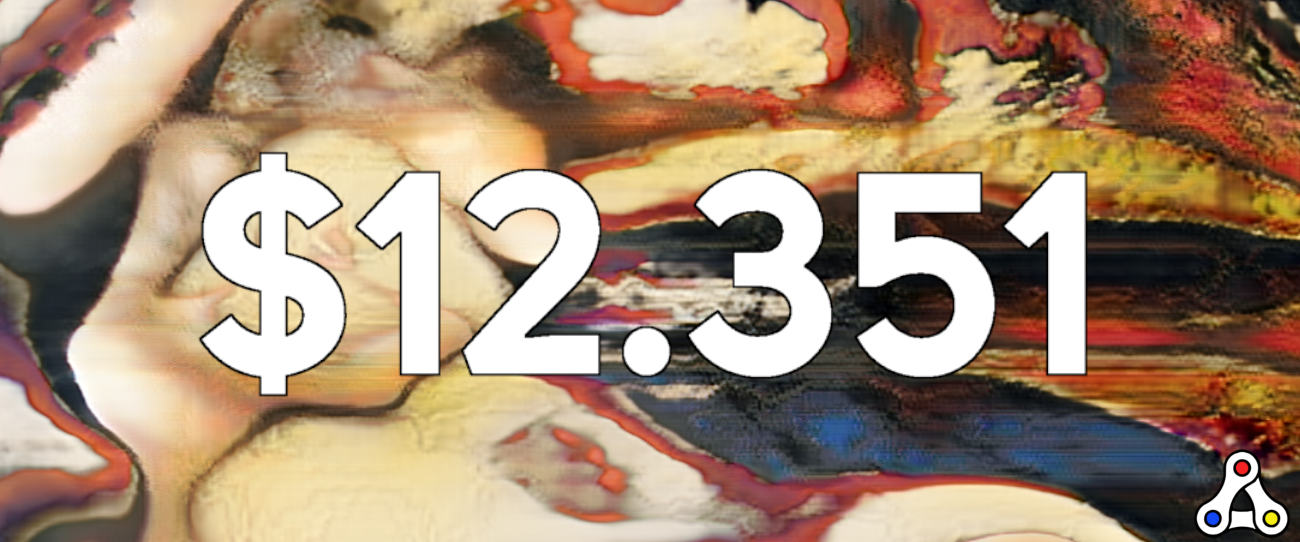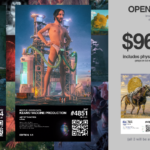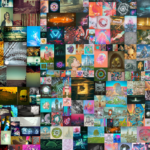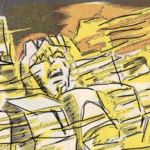Digital images are becoming art. True digital art with real value. On January 18th 2020 a digital image was bought for over 12 thousand dollars. Robbie Barrat created the image in 2018 and named it AI Generated Nude Portrait #1. But how is it possible that digital images are becoming valuable art?
In order to understand this change in our perception of digital images, we first need to understand art. If I would draw something on paper, nobody would consider it art. Even if I would be drawing something that’s far above average in terms of quality and originality, some might still not consider it art. And if they do, it’s likely they don’t consider it to be valuable.
What is art?
Let us first agree that a definition of art is controversial by nature. However, art is always something that artists create with the intention to be at least a little bit aesthetic, surpassing everyday objects. These creations can often only be partially understood to those outside the current, ruling culture. Art can have a ceremonial or religious function, but it doesn’t need to. Arts are always changing, just like the rest of culture. New technology and artistic experiments create new genres, art forms, and styles. As Steven Davies wrote in The Artful Species (2012), art has existed in virtually every human culture that has ever existed. The first forms of art go back hundreds of thousands of years.
The way we look at art and how it is defined changes over time as well. On top of that there are plenty of philosophers who even stated that a definition of art is not possible. However, definitions of art attempt to keep two facts in mind. Firstly art has important historical or cultural features, and has trans-historical and pan-cultural characteristics that come together in something that’s simply the aesthetic appearance of art.
Determining the value of art
In 2019 the world’s market for art was worth 64 billion dollars. Last year a 1986 sculpture by Jeff Koons sold for 91.1 million dollars. At the same time there’s older art for artists that are no longer with us, selling for hundreds of millions of dollars. However, these big sales come from a small group of wealthy investors and only art pieces from a small group of artists is ever sold for such an amount. Most artists never sell their work for six or seven figures.
Actually, most art is very affordable. Artists with some degree of fame will ask between ten and fifteen thousand dollars for a medium-sized painting. There’s a rise in popularity for art fairs aimed at middle class art collectors.
Let’s first state that the work of dead artists tends to be valuable, because – quite simply – there won’t be an increase of art from their hands. Contemporary art from living artists is often less valuable for the same reason. Another reason comes from the fact that we can only see true art can while looking from a cultural and temporal distance. A brilliant modern artist might get a couple of thousand dollars for his work. While his work could be worth much more in the future, when we look back at the cultural impact and rarity.
In the end it also matters what someone is willing to pay for it. And art galleries and traders can push the price greatly. There’s not one element that determines value, and there are many delicate processes to influence the price of one’s work.
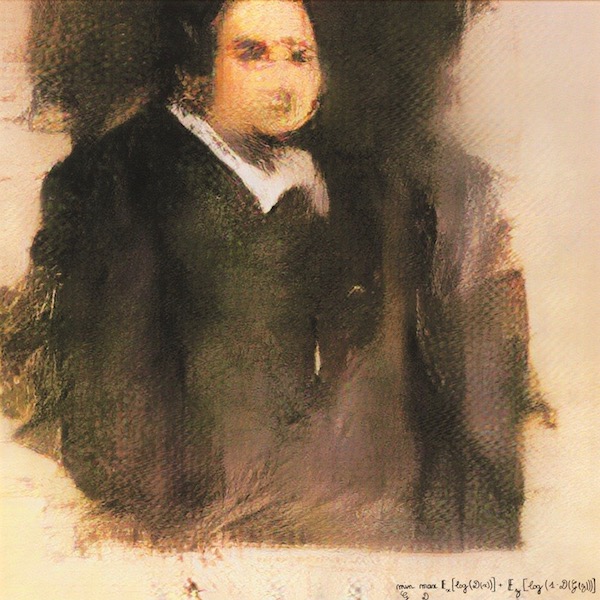
Digital images as art
Art has been created through a wide variety of media. Since the rise of computer media, art has also found its way to computer screens. In 2018 the Paris-based art collective Obvious created a series of computer-generated images from the family De Belamy. In October 2018 Edmond De Belamy sold in an auction at Christie’s New York. An artificial intelligence created the image, which was then printed on canvas. Ultimately it sold for $432.500, an amount that baffled many critics.
You might argue whether a computer can create art. But in the end it was a human process of coding and feeding the algorithm that made the computer create this image. One problem with this painting, is that it’s printed on canvas. It’s not a new medium. The value of Edmond De Belamy is in its one-of-a-kind canvas and the story behind it, but not in the image itself.
Digitally stored images as art
The auction of Edmond De Belamy was an unique event in art history. However, the sale of AI Generated Nude Portrait #1 is very different, because we are talking about a digital image here. There’s no canvas. No physical representation.
Until a couple of years ago it was impossible to find a truly original first edition of a digital image. Timestamps in a search engine could help, think about a timestamp made when you created an image. However, we can easily alter these numbers. Computers allow users to make one thousand copies of an image with a click of a button. There’s no real originality there.
Because of these characteristics of digital images, an image of AI Generated Nude Portrait #1 and Leonardo DaVinci’s Mona Lisa would have to same value: nothing at all. They are mere copies of the original work. The real Mona Lisa is hanging in the Louvre in Paris, and that’s verifiable. The interesting thing is that we can now also verify the original location of AI Generated Nude Portrait #1.
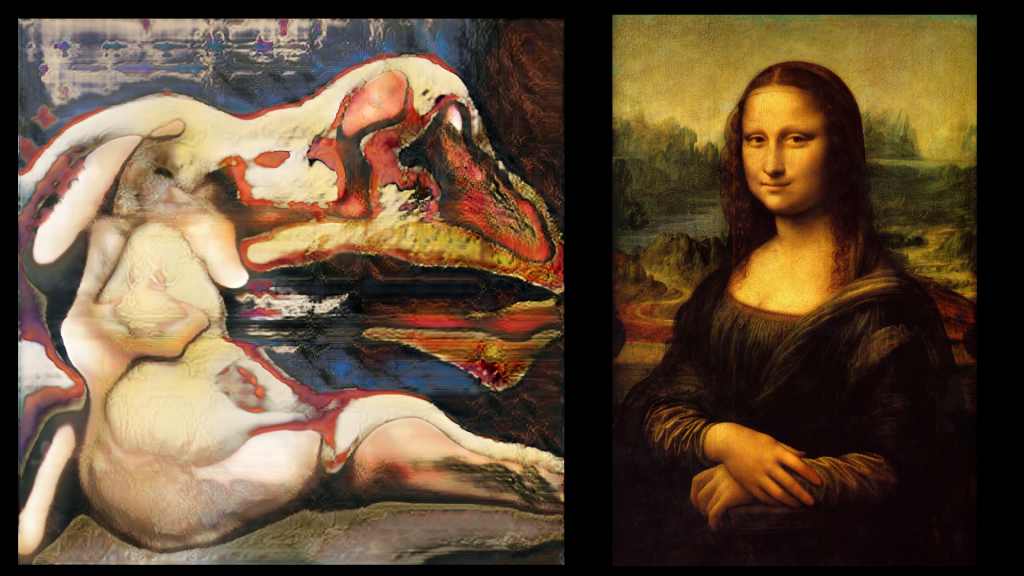
The rise of blockchain technology allows artists to timestamp their work on the blockchain, and creating a cryptographic connection to their digital work. This way the authenticity of the original work can always be verified. It’s blockchain technology that allows digital art to exist and to be verified as unique.
Of course the amount someone is willing to pay for art, determines the value. However, digital art now surely has characteristics to be considered valuable art:
- It can be verified as an unique creation
- It’s part of our contemporary culture,
- Capable of being aesthetic having an underlying meaning
But what did AI Generated Nude Portrait #1 do to become so valuable? Perhaps because it was the first piece of digital art that was ever tokenized by SuperRare. Additionally it’s the first piece in a bigger collection from an artist that has become known for his art made through artificial intelligence.
A new direction for art
Digital art is part of our modern culture, and really represents something about our current cultural time frame. Technology now allows us to address authenticity in digital art, which makes digital art in its current form a potentially great investment. The rise of blockchain technology and the concept of digital ownership has given birth to a new wave of artists embracing technology to its fullest.
After its creation in 2018 AI Generated Nude Portrait #1 its creator sold it for $75.74. Which means that the investor already made a 174 times his money back. On top of that it’s worth noting that blockchain technology is also very friendly towards artists. In the case of the computer-generated nude portrait the original creator gets a commission over the sale. Artist Robbie Barrat earned another $1300 from the sale.
In the past few months there has been a significant increase in digital art offerings through digital galleries like Superrare. On top of that there has also been a big increase in the amount of money bid on these digital art pieces.
Whether these pieces of art will increase in value or lose their value over time is obviously unclear. We can only determine the true value of each piece of art or an artist’s entire oeuvre in retrospect. Current values are probably more about speculation and potential.
One of the current problems with digital art, is that it’s hard to showcase. Virtual reality worlds like Cryptovoxels could provide one way to show digital art to an audience. However, we will also need a physical way to showcase digital art. I foresee specialized screens coming in the near future. These special displays could allow owners to showcase their favorite works, all stored on the blockchain to their own crypto wallets. Digital art can also have moving images, underlining the importance of using screens instead of canvas.

